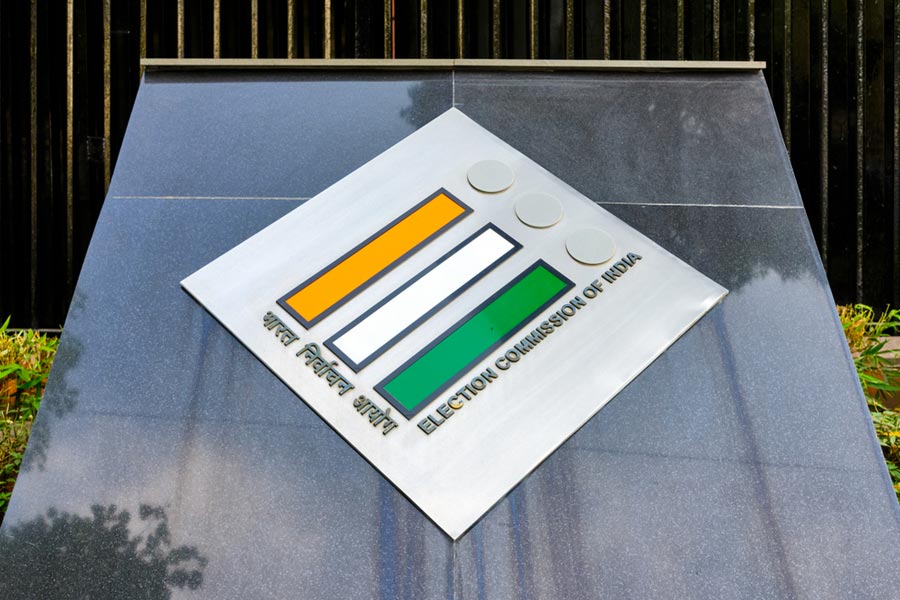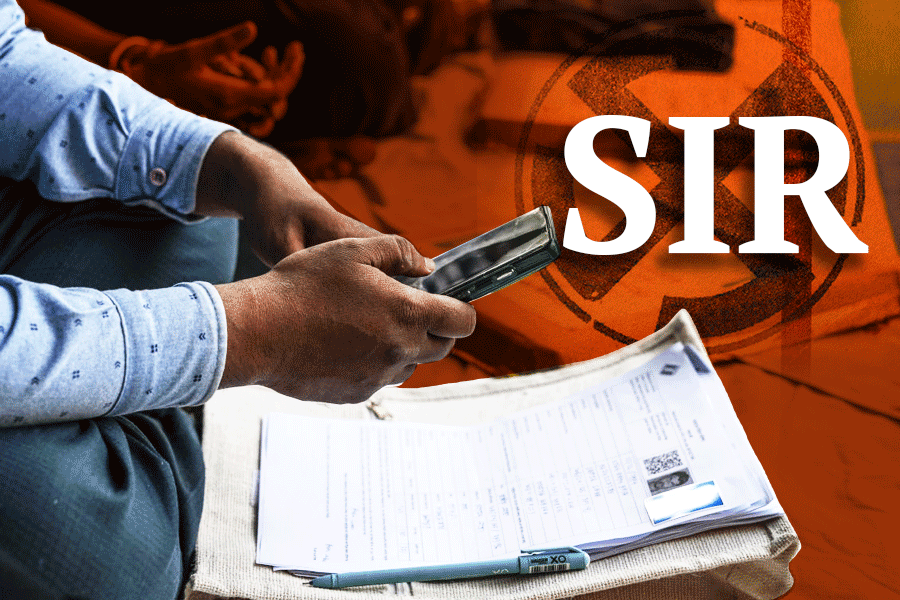
The saffron flag is out - and there is cause for celebration. Seventy years after a seed was planted in Guwahati by a young pracharak (preacher), the tree has borne fruit. Not surprisingly, the mood in the 830-odd Rashtriya Swayamsevak Sangh (RSS) shakhas in Assam is euphoric.
And Assam, where the Bharatiya Janata Party (BJP) will for the first time form a government, is just the beginning, RSS activists believe.
The door to the Northeast has opened up.
"Finally a patriotic party is now ruling the biggest state in the Northeast. I hope other states in the region will follow," says Sankar Das Kalita, prant prachar pramukh, North Assam. He adds that around 60 per cent of the BJP winners in the state have strong links with the RSS.
.jpg)
There are many reasons for the BJP's success in Assam - its tie-up with a regional party, going with a candidate as chief minister, polarisation of votes on communal lines, anti-incumbency sentiments and so on. But RSS pracharaks point out that they have been building up a slow campaign over the years, highlighting local icons in a bid to win over people. The campaigns linking Hindu mythology with the region, re-telling of local history and shaping historical characters have been carried out through RSS shakhas, schools, ashrams and social activities.
"The RSS realised that although the Northeast is a melting pot of several ethnic groups, every group is independent-minded and proud of its own culture and identity," says an Assamese author and activist who does not want to be identified.
That the icons revered in many parts of the country wouldn't work in the Northeast became apparent to Dadarao Parmarth, an RSS pracharak from Nagpur, when he was sent to work in Assam in 1946.
Parmarth found that Chhatrapati Shivaji, for instance, did not ring a bell in Assam. Later, RSS pracharaks found that many of the issues that worked as electoral planks elsewhere - such as building a Ram temple in Ayodhya - had little effect in the Northeast. And, certainly, campaigns against cow slaughter among beef-eating communities were bound to fail.
So in Assam, the pracharaks focused on local icons such as the 16th century scholar and socio-religious reformer Sankardev to spread "religious nationalism". Pragjyotisha and Kamarupa - as the region was known in epics - were invoked. In Arunachal Pradesh, RSS meetings would stress that Rukmini, the wife of Lord Krishna, was a tribal princess from the region.
.jpg)
"The RSS chose to name its first school in Assam Sankardev Shishu Kunja way back in 1979," points out Malini Bhattacharjee, political scientist, Azim Premji University, Bangalore, who has worked on the influence of Hindutva in the Northeast. Sankardev's portraits in several schools in Assam are next to those of RSS leaders K.B. Hedgewar and M.S. Golwalkar.
Sankardev, human rights activist and journalist Ajit Kumar Bhuyan stresses, was made an electoral issue by the BJP when it launched a campaign against the alleged occupation of satras or monasteries of Sankardev by "illegal immigrants" during the polls.
"It is an issue that matters to most Assamese Hindus because almost every family is affiliated to one or the other of the satras spread across the state," Bhuyan says.
The BJP also made an icon out of freedom fighter Gopinath Bordoloi, presenting him as a "Hindutva" hero because he had resisted Mohammad Ali Jinnah's move to take Assam into East Pakistan.
"We told the people of Assam that when a son of this soil (Bordoloi) did not let Assam go into East Pakistan, how could they allow 'foreigners' from Bangladesh to come and settle in Assam," says Ramesh Sheladar, former general secretary of the BJP in Assam and former RSS pracharak.
In Manipur, the RSS and the BJP have been holding up images of Rani Gaidinliu, a Naga reformist who fought the British and Christian missionaries. The Centre, according to reports, has been planning to include freedom fighters from the Northeast in NCERT textbooks.
"The RSS is also promoting Tikendrajit Singh (prince of Manipur who fought against the British in 1889) and other princes who were exiled to the Andaman jail," says Naorem Mohen Singh, a Manipuri filmmaker who runs a social media campaign to popularise Prime Minister Narendra Modi in the Northeast.
In Meghalaya, U. Tirot Singh, a Khasi chief who fought the British in the 18th century, is the Hindutva hero. Another icon is the patriotic U. Kiang Nangbah, who was hanged by the British in 1862. The RSS, local activists say, has been working closely with the rooster-worshipping Seng Khasi tribe (of the Khasi hills) that hasn't converted to Christianity and the Niam Tre, a socio-cultural and religious organisation from the Jaintia Hills.
"We talk about these heroes to instill a sense of pride in the locals and invoke a sense of nationalism. We urge them not to change their tradition and religion," a former RSS pracharak from Meghalaya says.
But trying to "Hinduise" local heroes doesn't always work. The RSS's attempts to build a campaign around Lachit Barphukan - commander of the Ahom kingdom who led the 1671 Battle of Saraighat against the Mughals - failed.
"They tried to make it a Hindu vs Muslim issue. But Barphukan's immediate lieutenant was a Muslim and the Mughal forces were led by a Hindu," says Chandan Kumar Sharma, a sociologist at Tezpur University.
In Nagaland, rediscovering Rani Gaidinliu did not yield much result either. The Centre had decided to construct a memorial in Kohima for her, but dropped the idea after protests from several civil society organisations.
.jpg)
Naga activist Zhatsu Angami says, "Their attempt to project Rani Gaidinliu as a Naga icon has fallen flat on its face. In Christian-dominated Nagaland, it is only the Heraka faith followers who look up to her. The rest consider her anti-Naga."
Imolemba Jamir, president, Ao Senden, an apex tribal body of the Ao Naga, one of the three largest tribal organisations, says that the Sangh hasn't been successful in its attempts in Nagaland. "They have, however, been running several schools," he says.
But RSS watchers point out that in their bid to make inroads into the Northeast, the RSS and the BJP have been staying away from contentious issues.
For instance, on the issue of whether beef eating janajatis should be considered Hindus, the Sangh has taken a nuanced position, says Bhattacharjee. "They have said that it is not such a big problem as it is out of sheer economic necessity that they have been eating beef," she elaborates.
In Arunachal Pradesh, the RSS has embraced several animist tribes, and drawn them into the larger Hindutva fold. For instance, the Tangsa tribe, whose supreme spirit, the Rangfraa, was never bound by any symbol, has now taken the shape of the Hindu god Shiva.
But Sangh activists insist that they are being recognised in the region also because of their work. "We have around 3,500 homeopathy doctors in Assam and another 500 in rest of the region. They work tirelessly for the health of the tribal people. We run hundreds of schools where thousands of children study. You cannot box us into one corner. We are for the uplift of every segment of society in the region," says Bharat Kumar, the Guwahati-based head of Sahakar Bharti, a Sangh-linked co-operative organisation.
The Vanavasi Kalyan Ashram has been active in the Northeast since the late Seventies and has established medical dispensaries in tribal districts besides sanskar kendras (cultural centres), schools and balwadis (pre-schools).
The most visible representation of RSS, of course, is the shakha. The camps are spread all over the Northeast and have been growing in recent years. In Assam, the number has grown from 400 five years ago to 830 today. In Manipur there are around 150 shakhas, in Arunachal 50, and four in Nagaland. There are some 250 shakhas of the Rashtriya Sevika Samiti, the women's wing of the RSS, in the Northeast.
According to Bhattacharjee, some of the other RSS-affiliated organisations working in the Northeast are Sanskar Bharati (for disseminating Hindu culture), Shikshan Mandal (focused on development of a "Hindu curriculum"), Bharatiya Sahitya Parishad (a literary society), Itihas Sankalan Samiti (for history) and Sahkar Bharati (a co-operative society).
"One has to agree that they have been working tirelessly in the field like missionaries used to. They are there in tribal areas. They come to the rescue during natural disasters and have also taken sides in tribal conflicts. This way they have been successful in building a huge network," Sharma of Tezpur University says.
And it seems that, after all these years, the fruits of labour are ready to be plucked. In Manipur, the BJP has already made a dent, winning two Assembly seats in a bypoll in November 2015. The elected members were former Trinamul Congress leaders.
An Imphal-based priest, who runs a Catholic medical centre, says there is a two-pronged strategy at work in the Northeast. While the RSS has been working quietly at the grassroots levels, particularly among tribal communities, the BJP's strategy seems to be "buying" political leaders from other parties.
The formula seems to be working. "Assam ho gaya, Arunachal ki baari hai" (Assam is done, now it's the turn of Arunachal Pradesh)," says Tai Tagak, former president of the Arunachal Pradesh BJP. And before that, of course, there's Manipur. The buzz in the state is that elections, slated for next year, may well be advanced. The iron, as the saying goes, is hot.
With additional reporting by Smitha Verma in New Delhi and Sharmistha Ghosal in Calcutta











